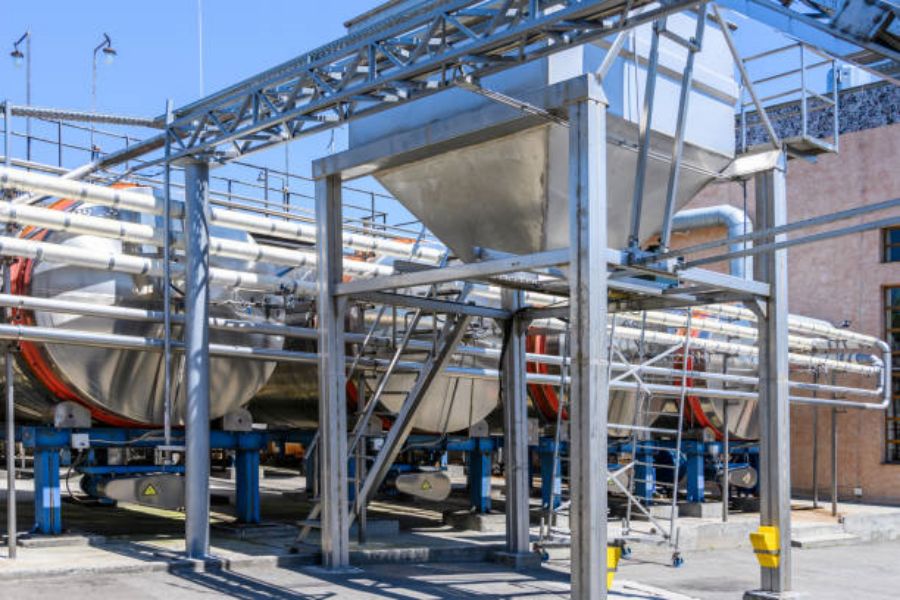Introduction
When it comes to industrial cooling systems, choosing between a water cooled chiller and an air cooled chiller can be a challenging decision. Both options have their own set of advantages and considerations. In this article, we will explore the key differences and help you determine which cooling solution is best suited for your specific needs.
1. Energy Efficiency
One of the primary factors to consider when comparing water cooled vs air cooled chillers is energy efficiency. Water cooled chillers typically have a higher energy efficiency ratio (EER) compared to air cooled chillers. This is because water is a more efficient heat transfer medium than air, allowing the chiller to operate at lower temperatures and consume less energy. If energy efficiency is a top priority for your application, a water cooled chiller may be the better choice.
2. Installation and Space Requirements
Another important aspect to consider is the installation and space requirements of the cooling system. Air cooled chillers are generally easier to install and require less space compared to water cooled chillers. Water cooled chillers need additional plumbing and a cooling tower, which can take up significant space. On the other hand, air cooled chillers are self-contained units that can be installed outdoors or on the roof, making them more suitable for applications with limited space.
3. Water Availability and Usage
Water cooled chillers require a constant supply of water for cooling purposes. This means that you need to have access to a reliable water source and be prepared for higher water usage. In areas where water scarcity is a concern, air cooled chillers are a more sustainable option as they do not require a continuous water supply. Additionally, water cooled chillers also require water treatment and filtration systems to ensure optimal performance and prevent scaling or fouling.
4. Noise Levels
Noise levels can be a critical factor in certain applications. Air cooled chillers tend to be louder compared to water cooled chillers due to the use of fans to dissipate heat. If noise is a concern in your facility or if you have noise regulations to comply with, a water cooled chiller might be a more suitable choice as it operates quieter, making it ideal for applications such as hospitals, hotels, or residential buildings.
5. Maintenance and Lifespan
When it comes to maintenance and lifespan, both water cooled and air cooled chillers require regular upkeep to ensure optimal performance and longevity. However, water cooled chillers generally require more maintenance due to the additional components involved, such as cooling towers and water treatment systems. On the other hand, air cooled chillers have fewer components and are easier to maintain. The lifespan of both types of chillers can vary depending on usage, maintenance, and other factors, but with proper care, they can last for many years.
6. Cost Considerations
Cost is a crucial aspect in any decision-making process. While water cooled chillers may have higher upfront costs due to the need for additional equipment and plumbing, they tend to be more energy efficient, resulting in lower operating costs in the long run. Air cooled chillers, on the other hand, have lower initial costs but can have higher energy consumption, especially in hot climates. Therefore, it is essential to evaluate the overall lifecycle costs to make an informed decision.
7. Cooling Capacity
The cooling capacity required for your application is another crucial factor to consider. Water cooled chillers typically have higher cooling capacities compared to air cooled chillers. This makes them suitable for applications that require large cooling loads, such as industrial processes or data centers. Air cooled chillers are better suited for smaller cooling loads, such as commercial buildings or small-scale facilities.
8. Environmental Impact
When it comes to environmental impact, both water cooled and air cooled chillers have their pros and cons. Water cooled chillers consume less electricity, resulting in lower carbon emissions. However, they require a continuous water supply, which can put strain on local water resources. Air cooled chillers, on the other hand, do not consume water but can contribute to higher electricity consumption. Consider the environmental factors specific to your location when making a decision.
9. Flexibility and Scalability
Flexibility and scalability are essential considerations, especially if your cooling requirements may change in the future. Water cooled chillers offer more flexibility and scalability as they can handle a wider range of cooling loads and can be expanded by adding additional cooling towers. Air cooled chillers have limited scalability, and if your cooling needs increase, you may need to invest in additional units.
10. Industry Applications
Finally, it is essential to consider the specific industry applications when choosing between water cooled and air cooled chillers. Water cooled chillers are commonly used in industries such as manufacturing, petrochemicals, and power generation, where large cooling capacities are required. Air cooled chillers are more prevalent in commercial buildings, hospitals, and small-scale facilities where space and noise considerations are important.
